A SERIES OF WALKS ALONG THE EMBANKMENT
THIS PAGE IS PRODUCED IN CONJUNCTION WITH
DAVE HILL
PART FIVE: VICTORIA EMBANKMENT GARDENS
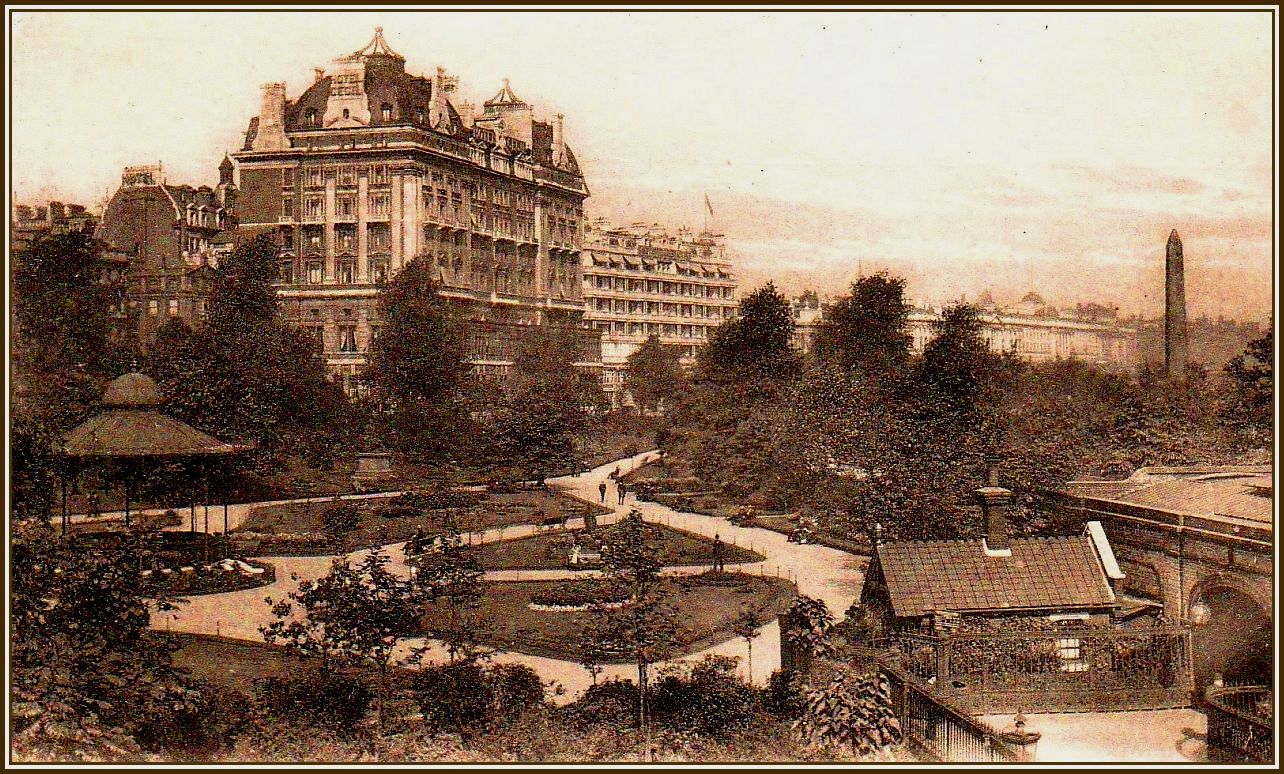 Hotel Cecil, Cleopatra’s Needle & The Main Gardens (with Band Stand)
Hotel Cecil, Cleopatra’s Needle & The Main Gardens (with Band Stand)
-oOo-
Following the construction of The Embankment (1865-1870), a series of gardens were created on reclaimed land on the inner side of the Victoria Embankment and comprises four sections, which follow the loop of the River Thames on the North Bank.
-oOo-
THE MAIN GARDENS
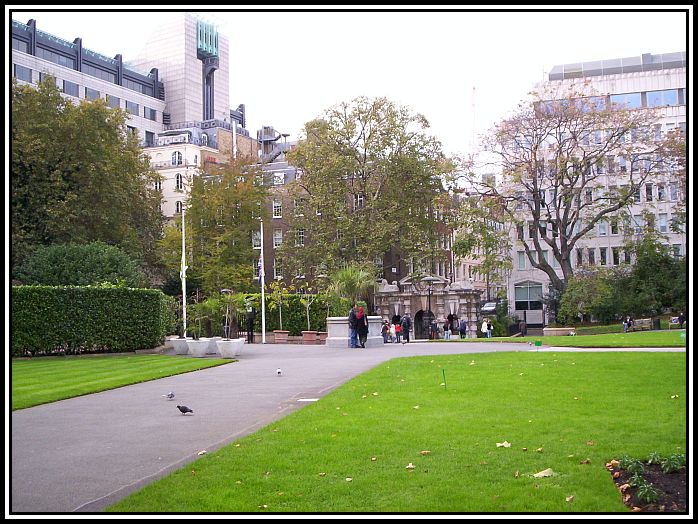 Entrance to The Main Gardens close to The York House Water Gate
Entrance to The Main Gardens close to The York House Water Gate
The next section of the Victoria Embankment Gardens to be created was the Main Gardens. These were designed by Alexander McKenzie and laid out on the site of the Adelphi Gardens and opened in May 1875. The Gardens are bounded by Savoy Place to the north and north-west, Watergate Walk to the west, Villiers Street and Embankment Place to the south-west, and by Charing Cross Underground Station and Hungerford Bridge to the south.
-oOo-
The Main Gardens contain a variety of trees including London Plane, Thorn, Catalpa and Metasequoia together with lawns, wooden benches (often provided as memorials) and flower beds.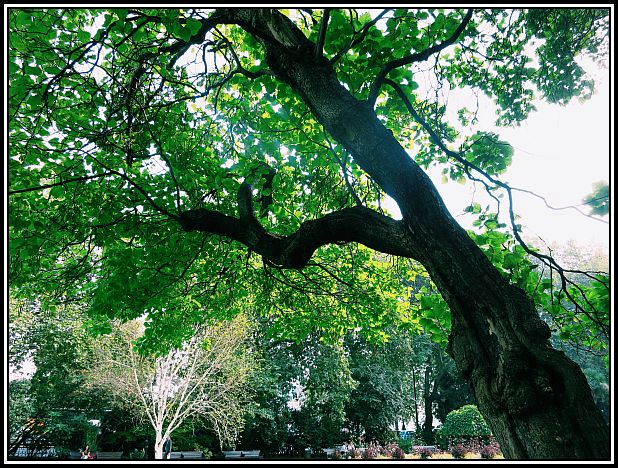
-oOo-
The Main Gardens are without question the most popular of the garden sections of the Victoria Embankment Gardens and is visited daily by people working in the area and visitors to London. In addition, there is a Bandstand, which replaced the original one when the area was re-landscaped in the 1950s.
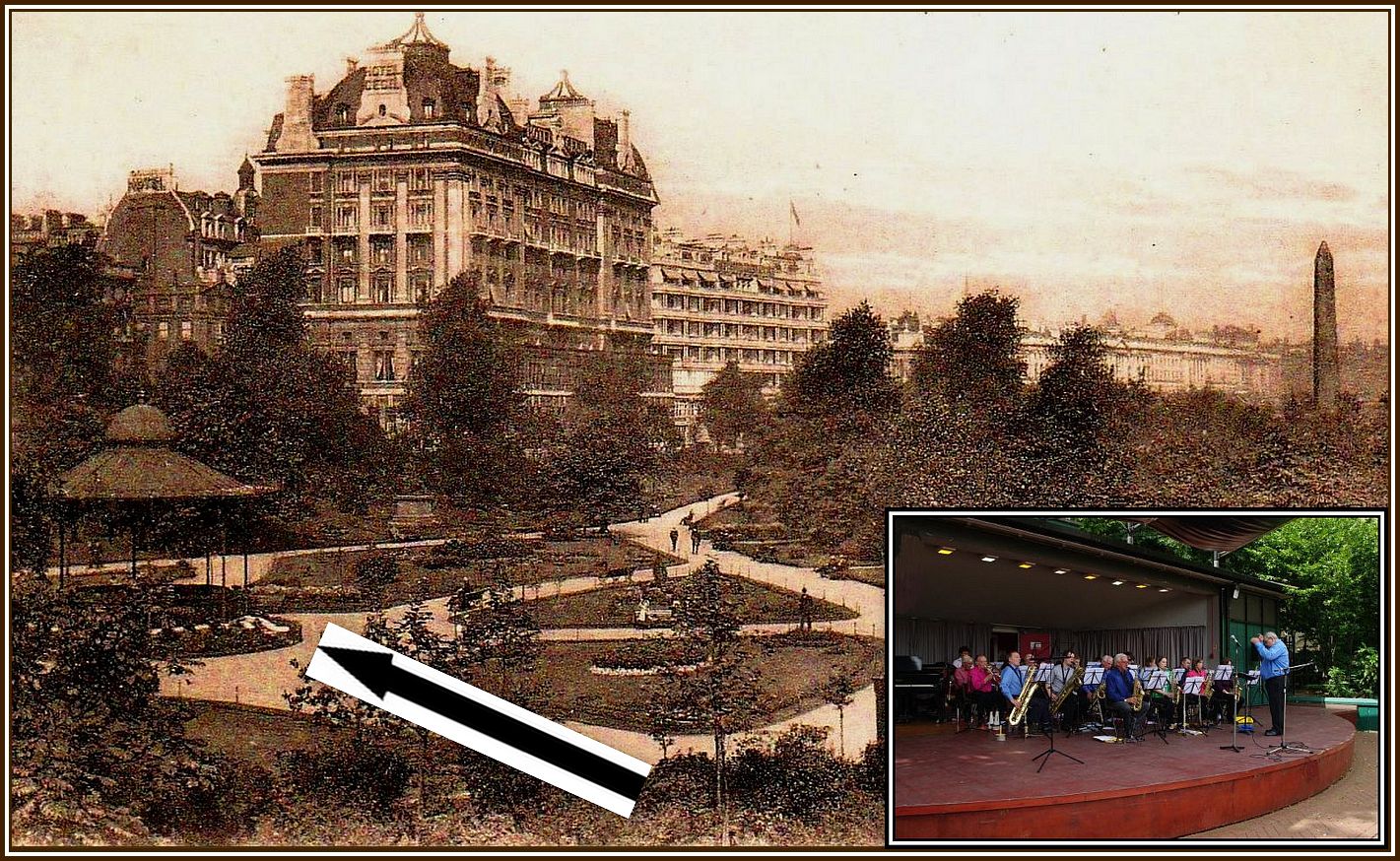 The Bandstands of the Main Gardens
The Bandstands of the Main Gardens
The Arrow points to the Old Bandstand & the Modern Bandstand is inserted
-oOo-
On the north-west boundary of the Main Gardens is the York House Water Gate, which was built in 1626 and was acquired by the London County Council (LCC) in 1893.
It had been built for George Villiers, the Duke of Buckingham (1592-1628) whose house was close by, and acted at that time, as the landing place prior to the embankment of the River. Today, as a result of the construction of The Embankment, it is now some hundred yards or so from it.
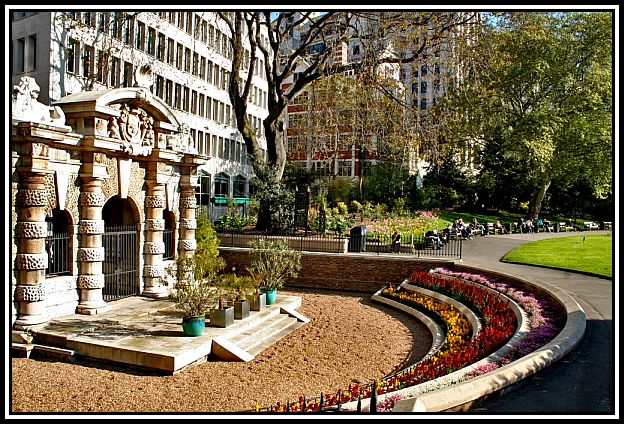 The York House Water Gate on a very bright Summer’s Day
The York House Water Gate on a very bright Summer’s Day
-oOo-
MEMORIALS
 Part of the Pathway Through The Main Gardens
Part of the Pathway Through The Main Gardens
The Main Gardens has the largest number of memorials found in the four sections of the Victoria Embankment Gardens. Those memorialised here come from a variety of walks of life and include Sir Arthur Sullivan (the memorial to W. S. Gilbert is found at Embankment Pier), Robert Burns, Sir Wilfred Lawson, Robert Raikes, William Edward Forster, Henry Fawcett and Herbert Eaton, 3rd Baron Cheylesmore. There is also a memorial to the Imperial Camel Corps and on the outer, south-east side of the Gardens, the Anglo-Belgian Memorial (also known as the Belgian Gratitude Memorial or the Belgian Refugees Memorial).
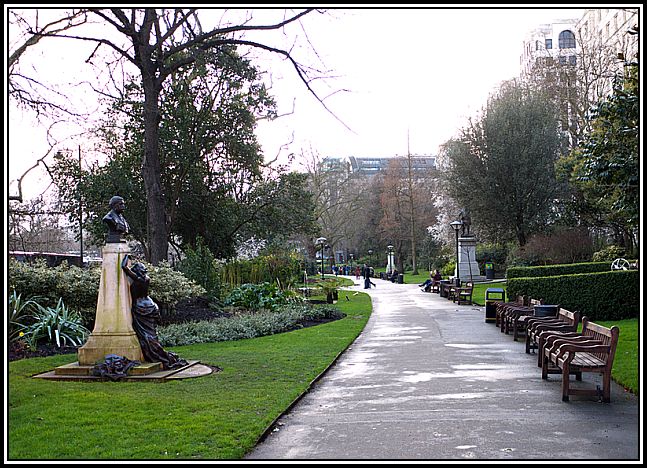 The Pathway of The Main Gardens passes by a number of Memorials
The Pathway of The Main Gardens passes by a number of Memorials
-oOo-
GILBERT & SULLIVAN
Sir Arthur Seymour Sullivan (1842-1900) was a composer and most famous for his collaborations with the librettist, Sir William Schwenck Gilbert (1836-1911). Their collaboration resulted in fourteen Comic Operas, a number of which are still frequently performed today by both amateur and professional companies to the delight of people around the world.
The Sullivan Memorial faces the Savoy Hotel in the Main Gardens. It is of bronze and was executed by Sir William Goscombe John (1860-1952) and unveiled in 1903 by Princess Louise. The Memorial features a bust atop of a pedestal together with a weeping Muse of Music together with some musical apparel at the base. It is inscribed with words by Gilbert from The Yeomen of The Guard:
If so, it must befall that Death, whene’er he call, must call too soon
-oOo-
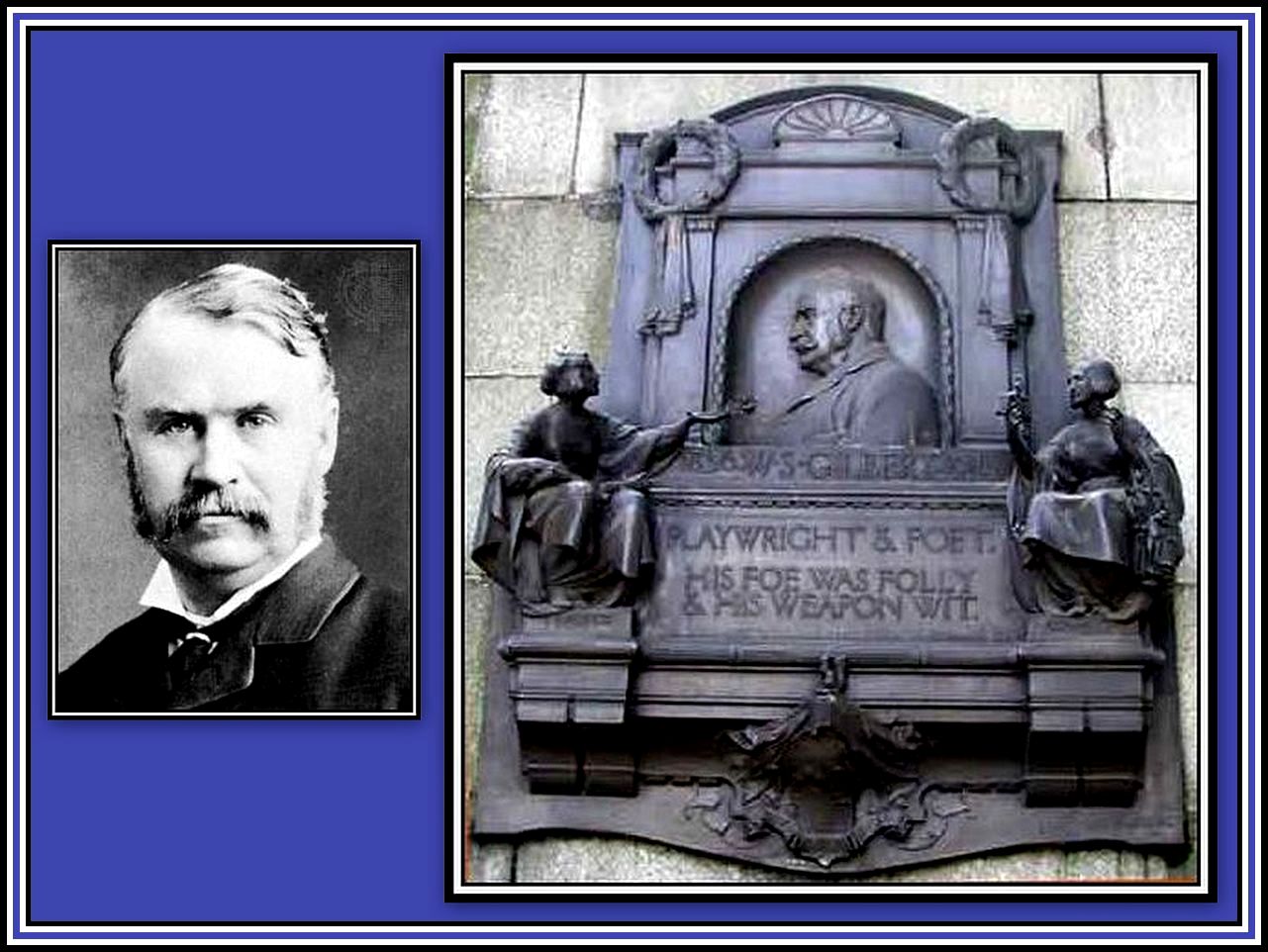 Sir William S. Gilbert Memorial
Sir William S. Gilbert Memorial
Although the Memorial to Sir William S. Gilbert is not in the Main Gardens, it is close by on the retaining river wall of the Victoria Embankment close to the Embankment Pier. The Memorial is by Sir George Frampton (1860-1928) and features a bronze profile together with two female sculptures, two wreaths and a shield and has the following inscription:
W.S. Gilbert
Playwright and Poet
His Foe was Folly and his Weapon Wit
-oOo-
-oOo-
ROBERT BURNS
aka Robbie Burns, Rabbie Burns, Scotland’s Favourite Son, the Ploughman Poet, Robden of Solvay Firth, the Bard of Ayrshipe and The Bard
Robert Burns (1759-1796) was a poet and lyricist and is regarded as the National Poet of Scotland and is celebrated throughout the world. He is a pioneer of the Romantic Movement and became an inspiration to the founders of both Liberalism and Socialism and is a Cultural Icon in Scotland and wherever Scots live.
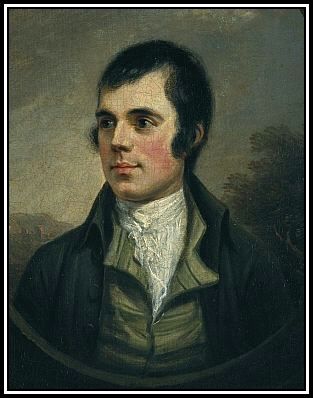 Portrait of Robert Burns by Alexander Naysmyth (1758-1840)
Portrait of Robert Burns by Alexander Naysmyth (1758-1840)
Throughout Scotland and elsewhere in the world, Burns Nicht (Burns Night) is celebrated on Robert Burns Day with a Burns Supper where traditional foods, including Haggis, are eaten together with the playing of Scots music and readings of his poems. This celebration of the life and works of Robert Burns occurs on the 25th January, which was his birthday.
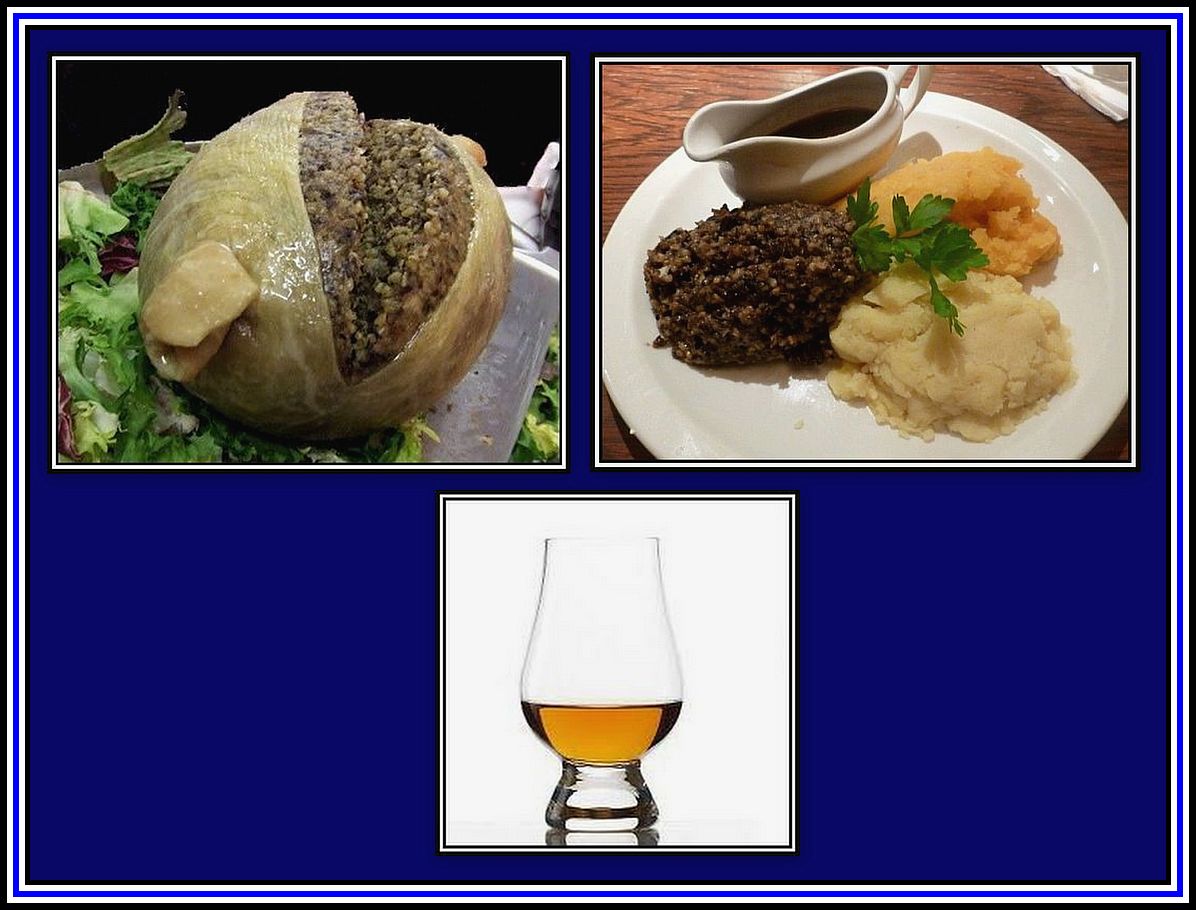 Haggis is served with Neeps, & Tatties (Boiled & Mashed Potatoes) and a Dram (a glass of Whisky)
Haggis is served with Neeps, & Tatties (Boiled & Mashed Potatoes) and a Dram (a glass of Whisky)
-oOo-
Click here to read the poems of Robert Burns
Click here to watch the BBC Documentary, The People’s Poet
Poems of Robert Burns set to music and sung by Ewan MacColl
-oOo-
The first Suppers were held in memoriam at Ayrshire at the end of the 18th century by Robert Burns’ friends on 21 July, the anniversary of his death. These Suppers have been held each year on this date. Each Supper begins with The Selkirk Grace:
Some hae meat an canna eat,
And some wad eat that want it;
But we hae meat, and we can eat,
And sae let the Lord be thankit.
The Grace was known in the 17th Century, but became known as The Selkirk Grace sine it was said that Robert Burns delivered it at a dinner given by Dunbar Douglas, the fourth Earl of Selkirk (1722-1799).
-oOo-
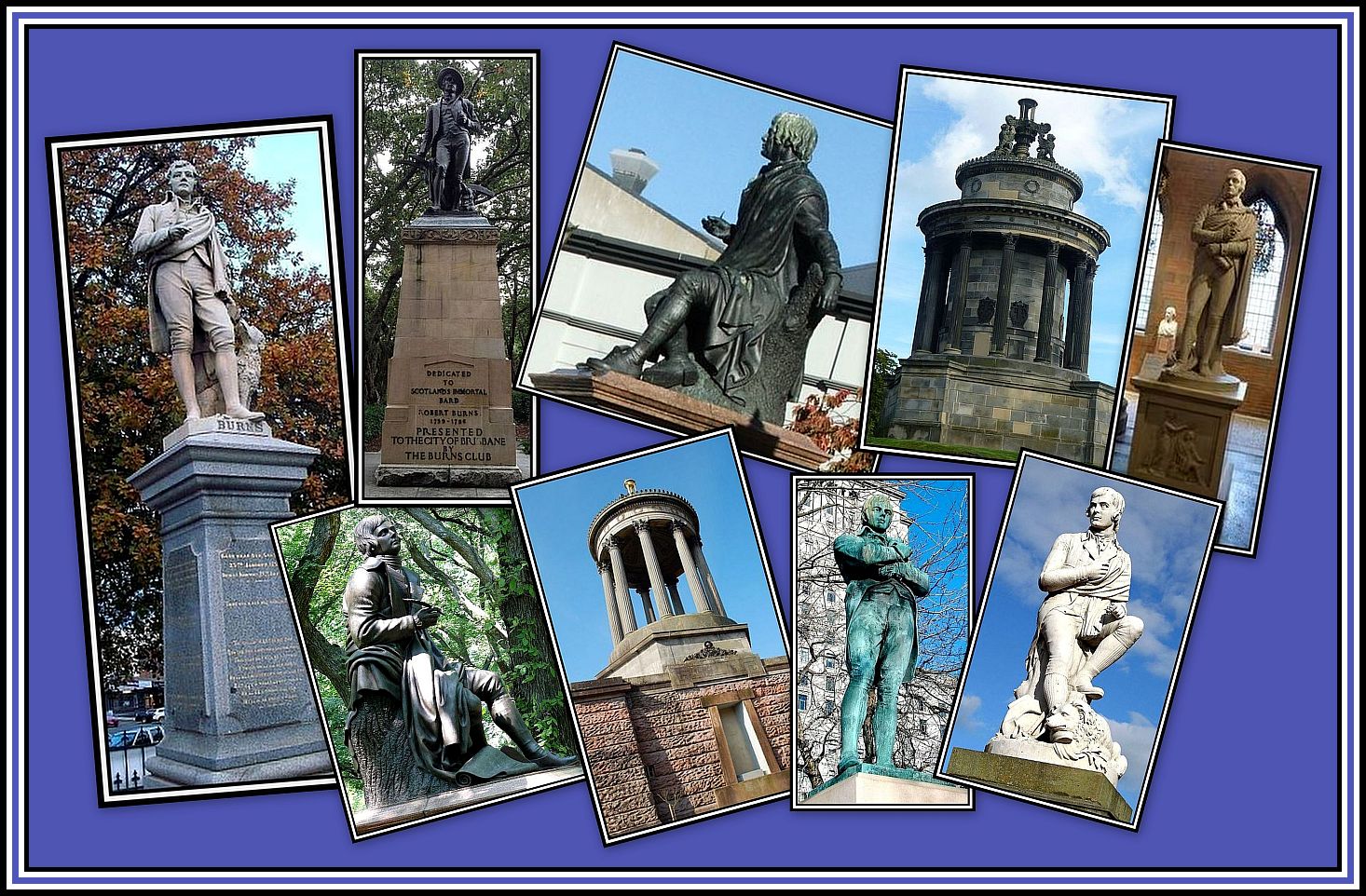 There are many Memorials to and Statues of Robert Burns Around the World
There are many Memorials to and Statues of Robert Burns Around the World
-oOo-
The statue of Robert Burns in the Main Gardens was the third cast of Sir John Steell‘s work and was a gift from John Gordon Crawford and unveiled by Lord Rosebery (1847-1929) in July 1884. Sir John Steel also made casts that are now installed in Dundee and Central Park in New York City. He was commissioned to produce the statue in 1883 with the money being collected by public subscription, as a Shilling Subscription. A number of busts based on the statue were made by Sir John Steel and one of them is present in Westminster Abbey, at Poet’s Corner.
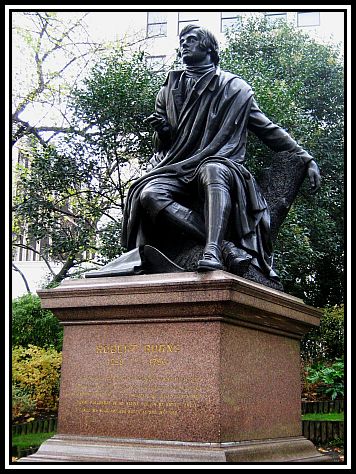 Statue of Robert Burns by Sir John Steell (1804-1891) in the Main Gardens
Statue of Robert Burns by Sir John Steell (1804-1891) in the Main Gardens
On the front of the plinth are the following words:
The poetic genius of my country found me at the
plough – and threw her inspiring mantle over me she
bade me sing the loves, the joys, the rural scenes and
rural pleasures of my native soil in my native tongue:
I tuned my wild, artless notes as she inspired.
On the paper at his feet on the left:
O sweet to stray, and pensive ponder a heartfelt sang.
-oOo-
-oOo-
ROBERT RAIKES
Robert Raikes painted by George Romney (1734-1802)
Robert Raikes (1736-1811) the Younger was born in Gloucester and became the owner and editor of the Gloucester Journal. He was a philanthropist and Anglican Lay Man and supported the Sunday School Movement whose aim was to teach children the basics: Reading, Writing & Arithmetic and a basic knowledge of The Bible. He believed that by offering this basic education to slum children, it would help prevent them from turning to a life of crime. His ideas gained much support, especially from evangelical writers, however his ideas were not without its detractors.
In 1780, Robert Raikes founded the first formal, free Sunday School in Gloucester and was responsible for schooling over one million children by 1831. Such Sunday Schools are considered to be the precursor schools of the English State School System.
A Memorial to Robert Raikes was produced by the sculptor Thomas Brock (1847-1922) and unveiled by the Earl of Shaftesbury on 3rd July, 1880 and marked the centenary of the opening of the first Sunday school. Replicas of this statue are present at Gloucester and at Queen’s Park on the campus of the University of Toronto and close to the Parliament of the Province of Ontario.
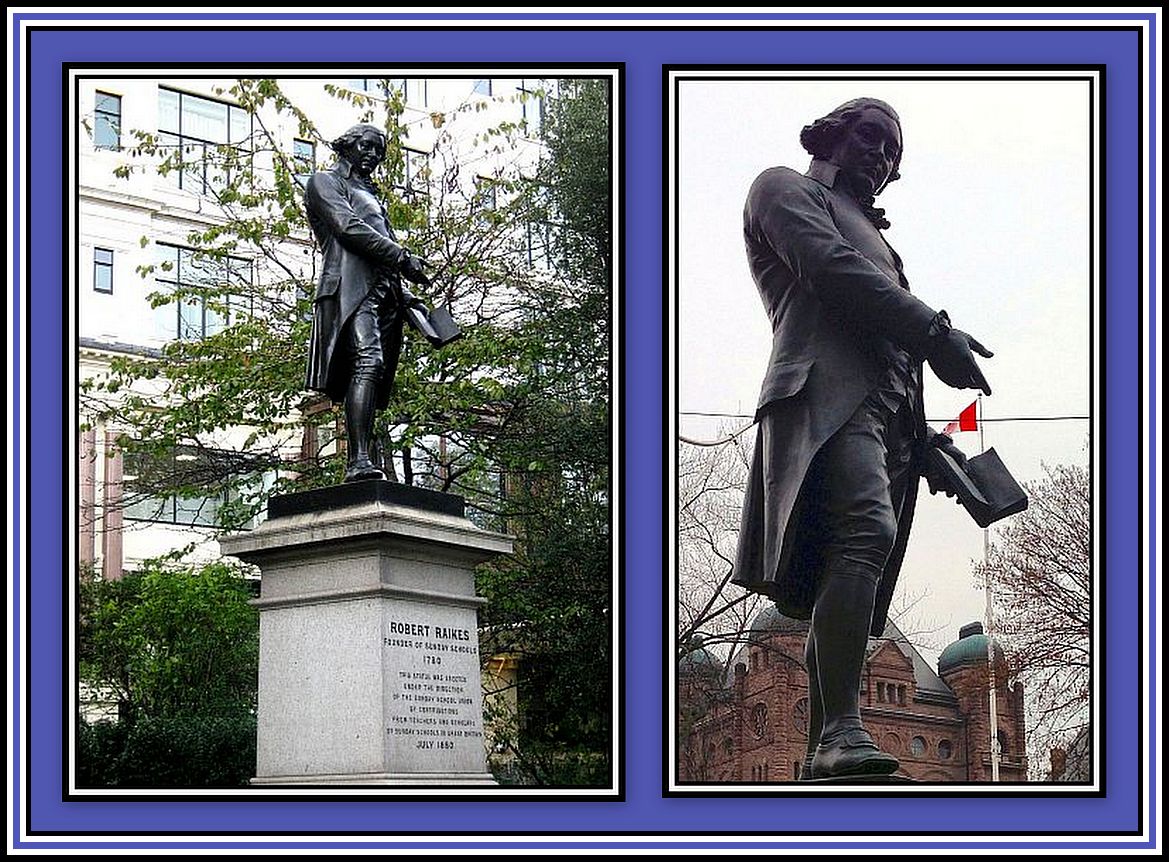 Statues of Robert Raikes in the Main Gardens (Left) and in Queens Park, Toronto (Right)
Statues of Robert Raikes in the Main Gardens (Left) and in Queens Park, Toronto (Right)
On the front of the pedestal, the following inscription appears:
Robert Raikes, founder of Sunday Schools, 1780.
This statue was erected under the direction of The Sunday School Union by contributions from teachers and scholars of Sunday schools in Great Britain. July 1880.
SIR WILFRID LAWSON
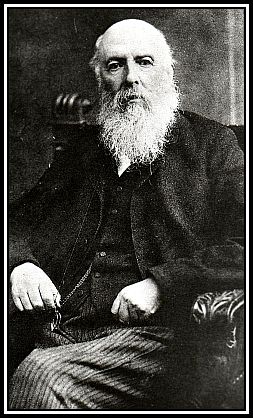 Sir Wilfrid Lawson ~1900 (Collection of Terry Carrick)
Sir Wilfrid Lawson ~1900 (Collection of Terry Carrick)
Sir Wilfrid Lawson, 2nd Baronet of Brayton (1829-1906) was an English Temperance campaigner and radical, anti-imperialist politician and member of the Liberal Party politician. He held a seat as a Member of Parliament (MP) in the House of Commons at various times between 1859 and 1906. He was considered to be a great humourist.
Sir Wilfrid was a founder member of both the National Liberal Club and the Reform League, a prominent member of the Peace Society and the Society for the Suppression of the Opium Trade. He was an enthusiast in the cause of Temperance and in 1879 he became president of the United Kingdom Alliance.
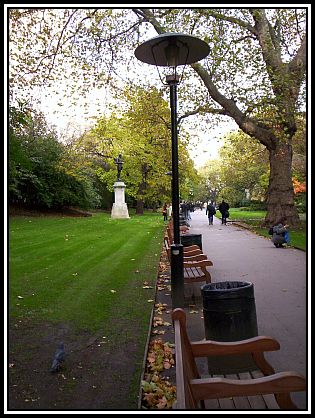 The Main Gardens with the Memorial to Sir Wilfrid Lawson
The Main Gardens with the Memorial to Sir Wilfrid Lawson
In his lifetime Lawson was one of Britain’s most celebrated and popular political figures. His strength of argument came from his unique way of transmitting the spoken word and became the Chief Jester to the House of Commons, where he contributed a rich, racy style to debates.
At the time of his death, Sir Wilfrid was chiefly known as a pro-Boar, anti-everything else and a supporter of Peace-at-any-Price. He supported payment of Members of Parliament (MP), Women’s Suffrage, the construction of a Channel Tunnel and the Irish Home Rule Movement. Today he his primarily remembered as a Temperance Reformer.
-oOo-
On 20 July 1909, the members of the United Kingdom Alliance and other Temperance Organisations erected a Memorial in the Main Gardens of Victoria Embankment Gardens. It was unveiled, amidst continuous interruptions by Suffragettes, by the then Prime Minister, Herbert Asquith.
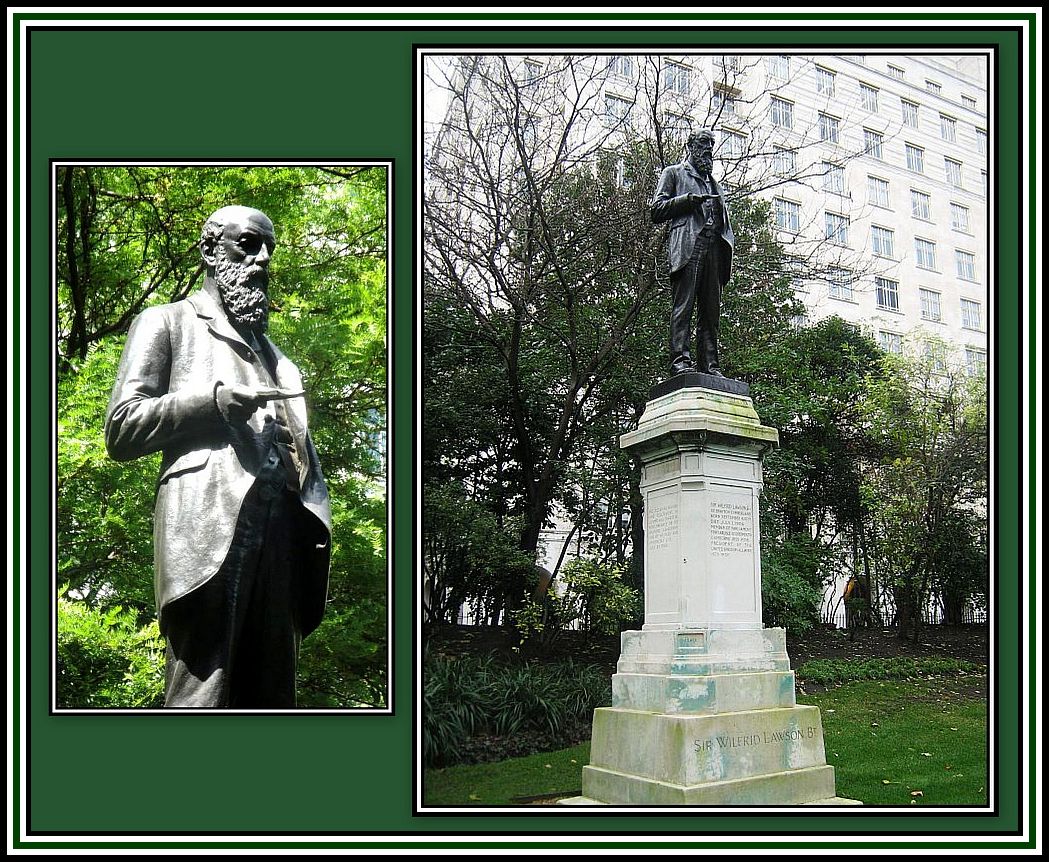 Memorial to Sir Wilfrid Lawson; each corner of the pedestal bears a small plaque, reading, clockwise from front left: Peace, Charity, Fortitude, Temperance.
Memorial to Sir Wilfrid Lawson; each corner of the pedestal bears a small plaque, reading, clockwise from front left: Peace, Charity, Fortitude, Temperance.
The bronze statue was designed by David McGill (1864-1947) and shows Lawson in an attitude of debate.
On the front of the pedestal is the inscription:
Sir Wilfrid Lawson, Bart., of Brayton, Cumberland; born September 4th, 1829: Member of Parliament for Carlisle, Cockermouth, Camborne, 1859-1906; president of the United Kingdom Temperance Alliance, 1879 1909.
On one side of the pedestal are the words:
A true patriot, a wise and witty orator, a valiant and farseeing reformer, he spent a long life as the courageous champion of righteousness, peace, freedom and temperance.
On the other side is the inscription:
Erected by his friends and followers in grateful remembrance of his splendid leadership, and of his pure and unworldly life, July 20th, 1909.
CLICK HERE
to continue reading about THE MEMORIALS OF THE MAIN GARDENS
-oOo-
ACKNOWLEDGEMENTS
I would like to thank Mr. Paul Bland for his help in the writing of this piece.
——oooOOOooo——
Click here to GO to PART SIX: VICTORIA EMBANKMENT GARDENS – WHITEHALL GARDENS & COURT
——oooOOOooo——
Click here to RETURN to PART FOUR: VICTORIA EMBANKMENT GARDENS – TEMPLE GARDENS
——oooOOOooo——
Click here to RETURN to A SERIES OF WALKS ALONG THE EMBANKMENT Home Page
——oooOOOooo——
Click here to GO to AN ADDITIONAL SET OF POSTCARDS OF OLD LONDON: THE EMBANKMENT by DAVE HILL
——oooOOOooo——
Click here to GO to ISAMBARD KINGDOM BRUNEL
——oooOOOooo——
Click here to RETURN to the TABLE OF CONTENTS
——oooOOOooo——
2 thoughts on “THE EMBANKMENT SERIES – PART 5 – MAIN GARDENS”
Leave a Reply

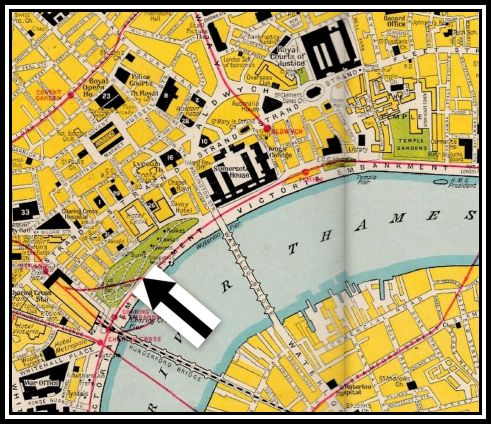
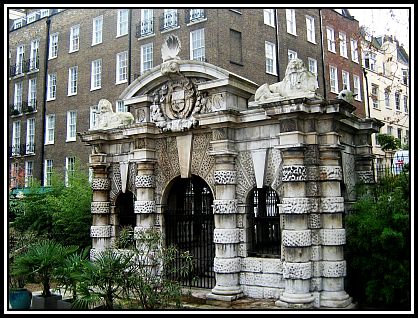
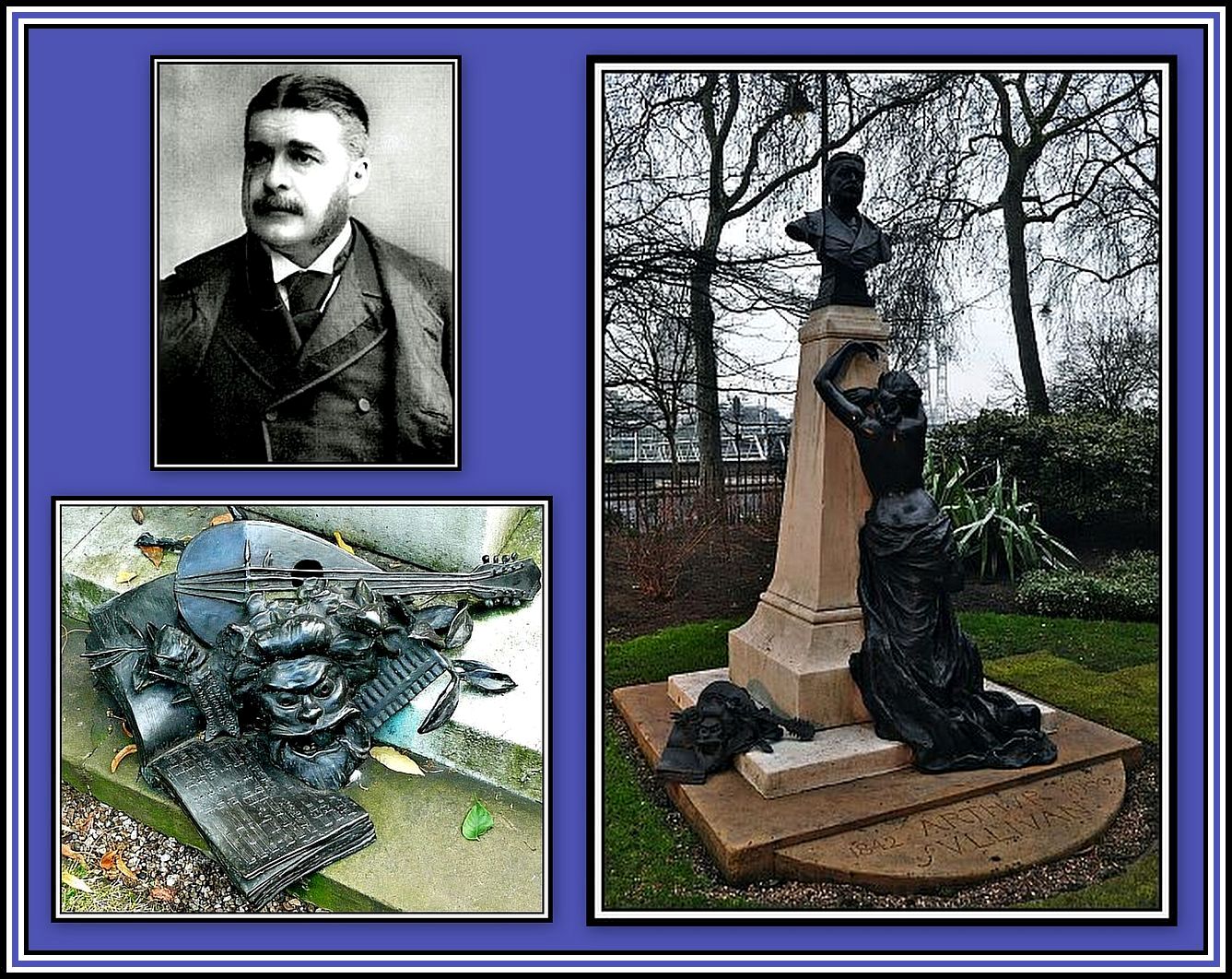
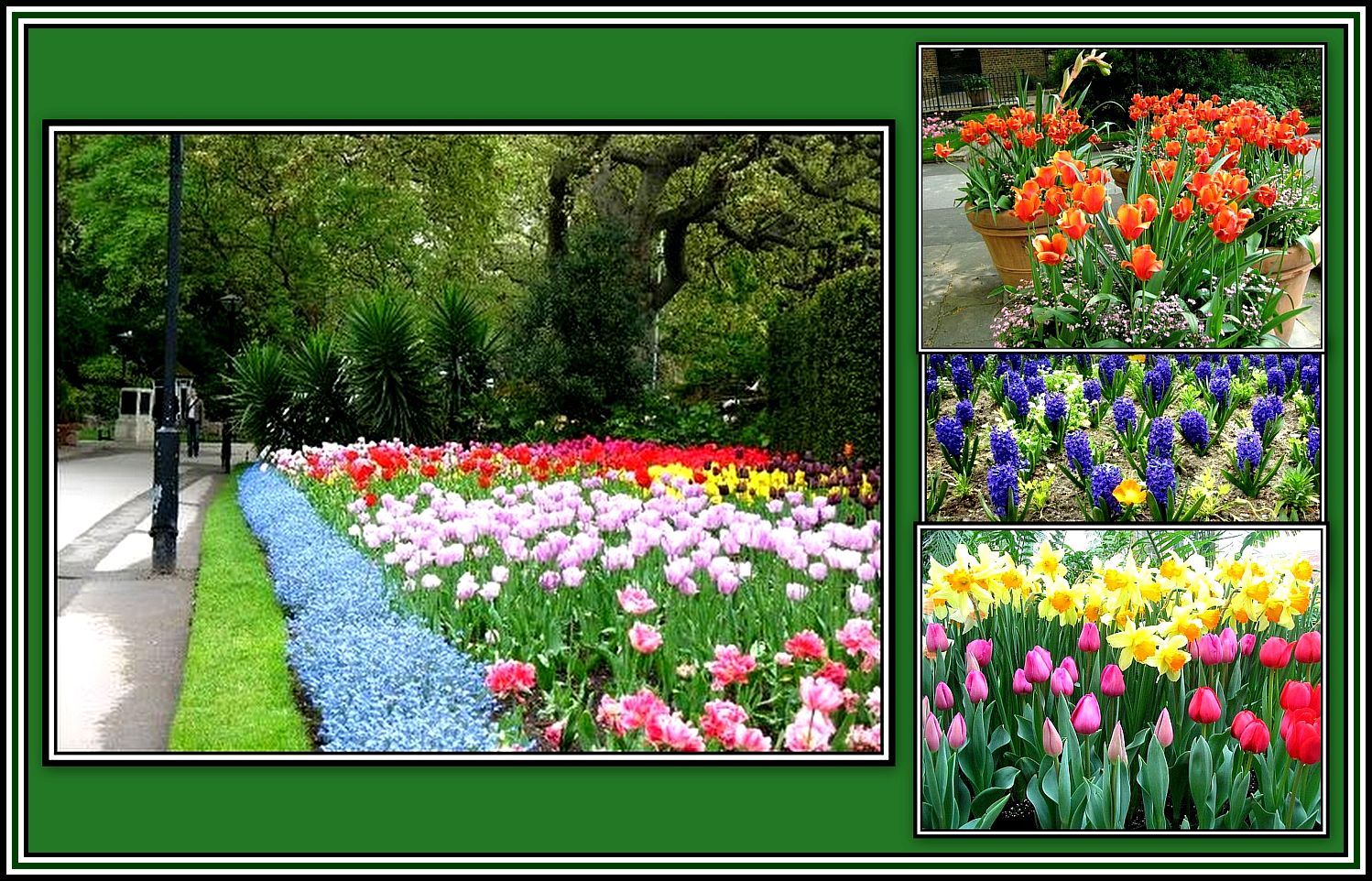
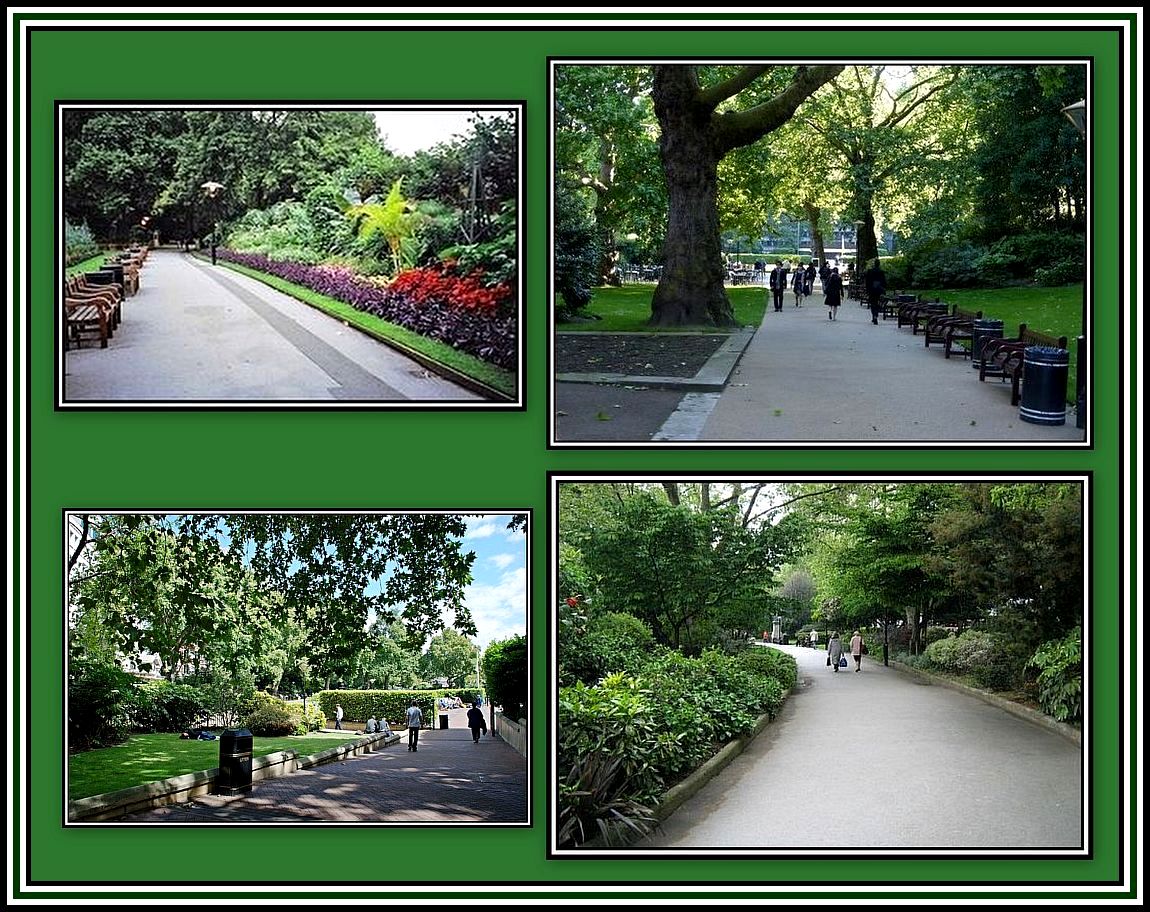
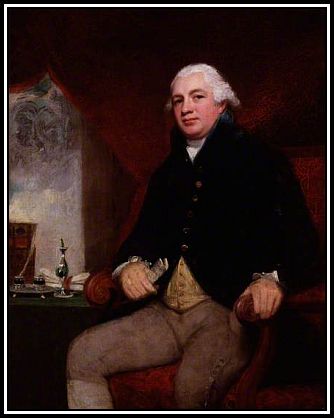
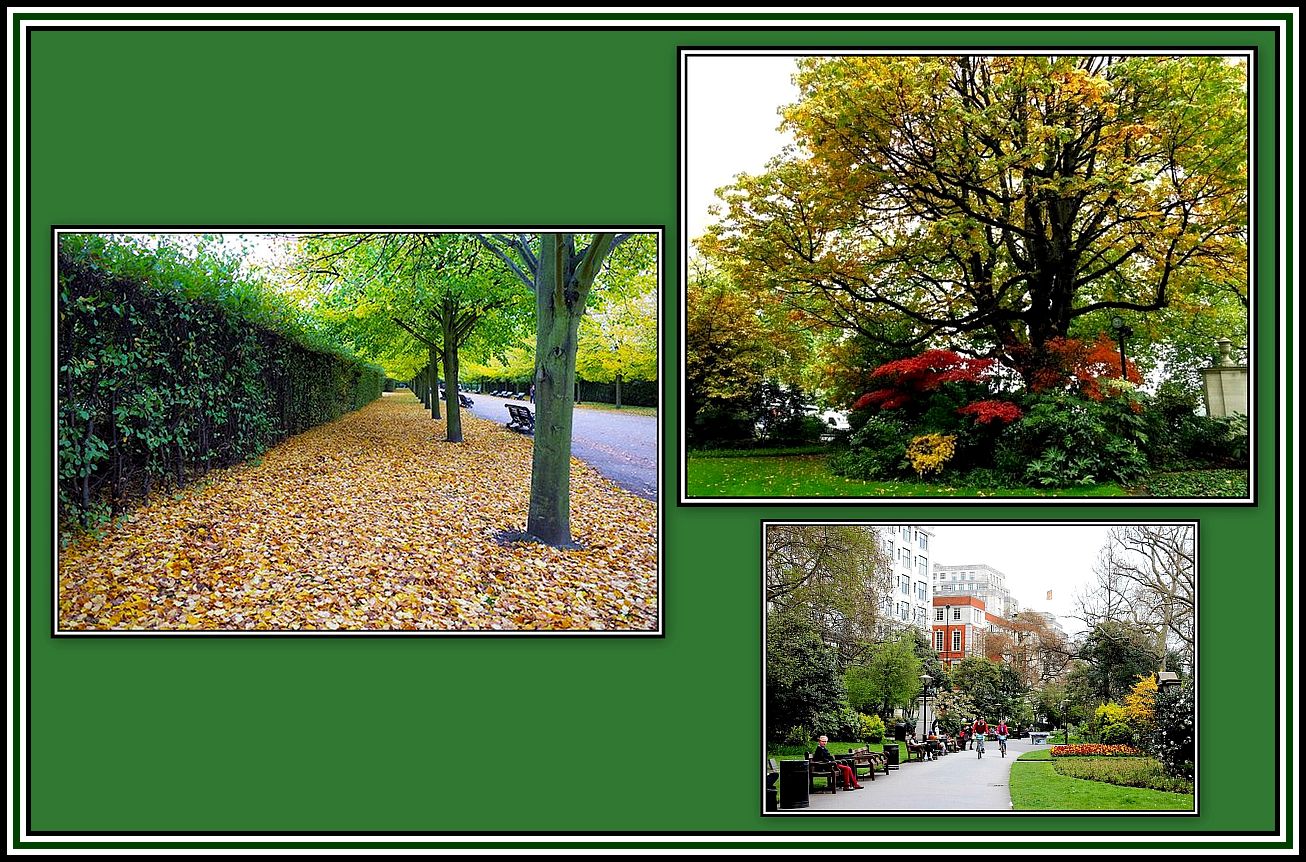
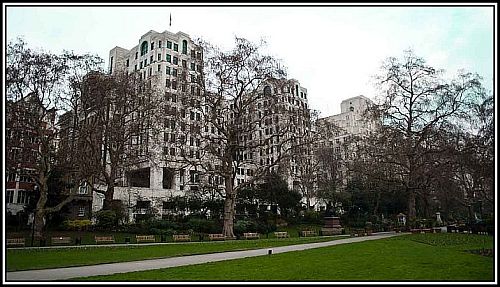
Excellent detailed history – so much to absorb. Thank you for bringing these facts to our attention.
Dear Charles, Congratulations on another excellent chapter on London’s history- well done.
I must say that despite having lived in London for 27 years, I have never seen the York House Water gate- what a magnificent piece of architecture.
I really liked Sir William Gilbert’s epitaph of ” His Foe was folly his weapon wit”.
I must say that looking at the picture of Sir William Lawson, there is a remarkable resemblance to the author of this website!!!
Again, Thanks for the memories Charles.
Ray